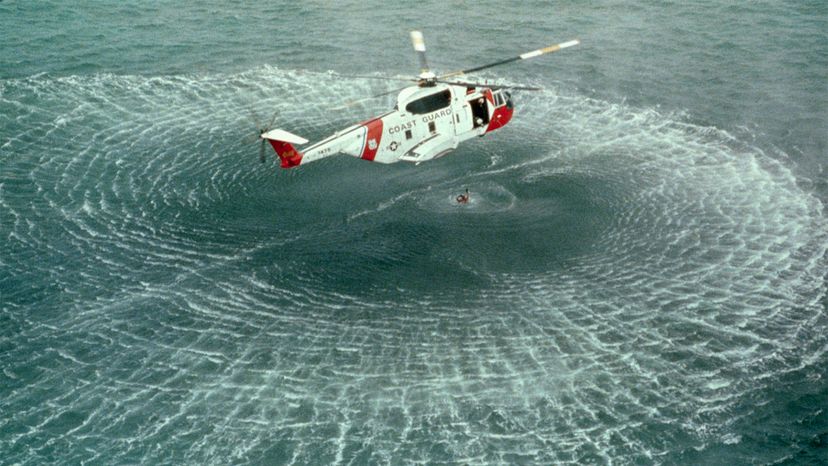Flying a Helicopter: Hovering

The defining characteristic of a helicopter is its ability to hover at any point during a flight. To achieve hovering, a pilot must maintain the aircraft in nearly motionless flight over a reference point at a constant altitude and on a heading (the direction that the front of the helicopter is pointing). This may sound easy, but it requires tremendous experience and skill.
Before we tackle the technique of hovering, let's take a moment to discussnap-of-the-earth(NOE) flight, another unique characteristic of helicopters.NOE flightdescribes a helicopter located just above the ground or any obstacles on the ground. Military pilots perfected the technique during Vietnam as a means to become more elusive to ground-basedweapons. In fact, film footage from the era often shows helicopters rapidly skimming the Earth's surface, machine-gunners firing from open rear doors or hovering with their skids just a few feet off the ground as troops disembark at a target location.
Advertisement
Of course, any helicopter taking off or landing must undertake NOE flight, if only for a few moments. It's a particularly critical time for a helicopter because a wild attitude adjustment could tip the craft too far and bring the rotor blades in contact with an obstacle.Attitude,因为我们purposes, refers to the helicopter's orientation in relation to the helicopter's direction of motion. You'll also hear flight-minded folks talk about attitude in reference to an axis, such as the horizon.
With that said, here's the basic technique to bring a helicopter into a hovering position:
- First, the pilot must cease any directional flying. For example, if flying the helicopter forward, the pilot must ease back on the cyclic until the helicopter's forward motion stops and the aircraft remains motionless over a point on the ground.
- Next, it's important that the pilot can detect small changes in the aircraft's altitude or attitude. He or she accomplishes this by locating a fixed point outside the cockpit and tracking how the helicopter moves relative to that point.
- Finally, the pilot adjusts the collective to maintain a fixed altitude and adjusts the foot pedals to maintain the direction that the helicopter is pointing.
To maintain a stabilized hover, the pilot must make small, smooth, coordinated corrections on all of the controls. In fact, one of the most common errors of novicepilotsis to overcompensate while trying to hover. For example, if the helicopter begins to move rearward, the pilot must be careful not to apply too much forward pressure on the cyclic because the aircraft will not just come to a stop but will start drifting forward.
Over the years, innovations in helicopter design have made the machines safer, more reliable and easier to control. Next, we'll look at a few of these innovations to provide a glimpse of how far helicopters have come and where they might go in the future.


